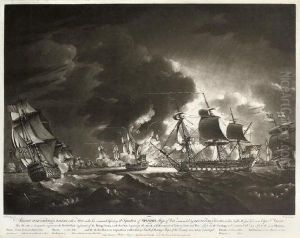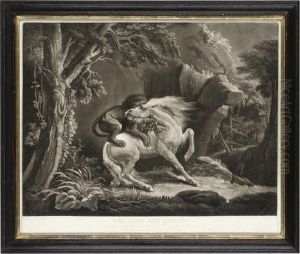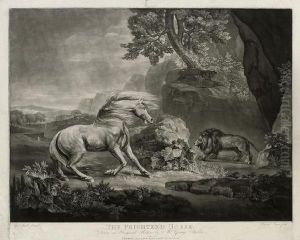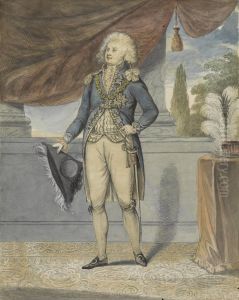Robert Laurie Paintings
Robert Laurie was a British engraver, publisher, and printseller, known for his significant contribution to the world of printmaking and cartography in the late 18th and early 19th centuries. Born in 1755, Laurie began his career not as an engraver but apprenticed in mezzotint, a printmaking process that was highly popular in England for its ability to reproduce the tones and details of paintings. His skill in this medium quickly garnered attention, and by the late 1770s, he was established as a talented artist in his own right.
Laurie's career took a decisive turn when he entered into partnership with James Whittle. In 1794, he took over the well-established business of Robert Sayer at 53 Fleet Street, London, a major hub for the production and sale of maps, charts, atlases, and naval and military prints. Under the banner of Laurie & Whittle, the firm flourished, expanding its offerings to include a wide range of printed materials, from maritime charts to political caricatures.
The partnership between Laurie and Whittle was not only commercially successful but also innovative. They were pioneers in the field of cartography, contributing to the development of more accurate and detailed maps. Their work was of particular importance to the expanding British Empire, which relied on precise navigational charts for its naval and mercantile ventures.
Laurie's contributions to the arts extended beyond his business acumen. He was involved in the artistic community of his time, engaging with contemporary issues and trends. Although not much is known about his personal life, his professional endeavors reflect a keen interest in the political and social developments of his era, as evidenced by the range of subjects covered in the prints published by his firm.
After James Whittle's death in 1818, Laurie continued to run the business until his retirement in 1823, when he passed the firm to his son, Richard Holmes Laurie, who maintained the company's reputation for quality and innovation. Robert Laurie died in 1836, leaving behind a legacy as a key figure in the world of printmaking and publishing. His contributions to cartography and the dissemination of visual culture during a pivotal period in British history continue to be recognized by historians and collectors alike.



